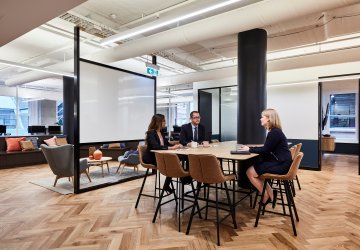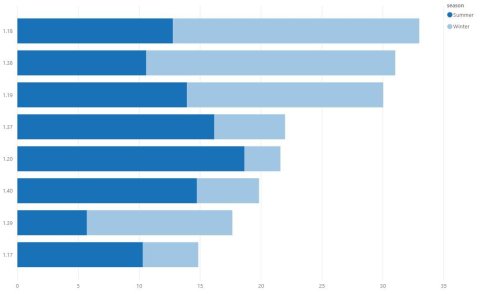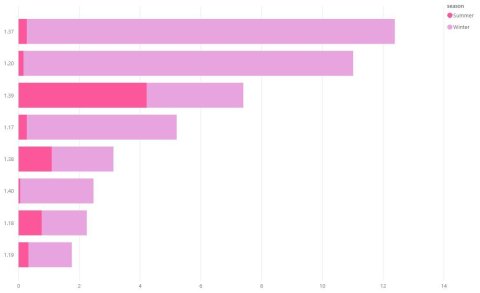With the heat this summer, my first reaction many mornings was to wear a dress to work. Then I would put on some tights and a cardigan as well, because you can’t dress for summer in the office. This has nothing to do with modesty, just with the office temperature.
The ‘perfect’ office temperature
The widely accepted standard temperature (of around 22°C or 72°F) was based on a small study of an office full of male employees. The research is questionable and several studies since then have shown that the ‘perfect’ office temperature for employee satisfaction and productivity differs depending on the specific employee and is influenced by several factors:
- In general, women have lower metabolic rates and are more affected by the cold. Their ideal office temperature will, therefore, be higher than their male colleagues.
- As employees get older, especially over the age of 55, they will also be more affected by the cold.
- Those who weigh more will get warmer more quickly and those with a below-average body mass index will get colder more quickly.
- Warm environments are better for creative thinking, while cooler workplaces are thought to help keep people alert during repetitive or monotonous tasks. Above 27°C (80.6°F), people start to fail at mathematics.
Which basically means there is no ideal temperature for an office.
In the Planon office
Giving end-users control over the temperature should reduce the number of temperature complaints, but the experience in our own office shows that’s not guaranteed.
The Planon HQ has climate controls in the office so employees can adjust the temperature themselves. A few years ago, we also added sensors to monitor the actual temperatures in our office. This year, using Planon Connect for Analytics, we extracted the sensor readings and analysed the hourly readings for the last six months of 2018.
The analysis of the hourly average temperature showed that our conference rooms were often colder than would be pleasant.
When looking at the distribution of colder temperatures over the day, we see that they happen at the beginning of the day (8am and 9 am), when the office temperature is controlled centrally. This central system only heats the office when the temperature drops below 16°C, so the start of the day is usually cool.
The same analysis showed that the occurrences where the temperature was more than 24°C were more frequent in winter than in summer.
Despite having climate controls in our meeting rooms, the temperature is quite often not within the range that’s agreeable to either men or women. It is more often too cold than too hot. Maybe it’s even because of the controls in the rooms: If someone enters a warm room, they will turn down the temperature as low as they can. When their meeting ends, the room will continue to cool until the next person enters and finds the room too cold. They will turn up the heat…and the cycle repeats.
We concluded that giving end-users control over temperature did not reduce complaints and did not make people feel more comfortable. Due to the continuous change in temperature, energy use is far from efficient and installations will suffer more, with more maintenance needed. We don’t want gender-specific meeting rooms, but this information has allowed us to start a discussion about having three different, fixed temperature ranges in the meeting rooms: cool (19-20°C), medium (20-22°C) and warm (22-24°C). And as we are able to track and trace the usage, we can adjust and change whenever needed.
Until that time, bring your cardigans and your tights. Don’t dress for summer in the office.



